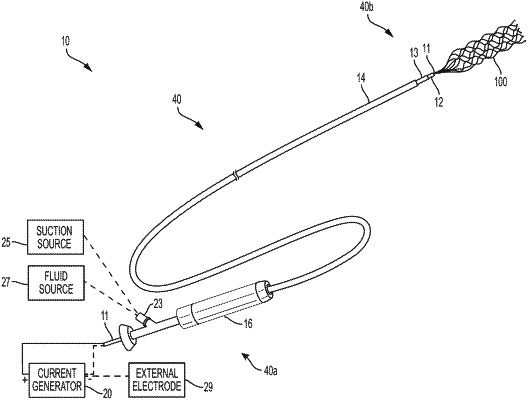| CPC A61B 17/221 (2013.01) [A61B 17/12109 (2013.01); A61B 17/12136 (2013.01); A61B 17/12168 (2013.01); A61B 17/22031 (2013.01); A61B 17/22032 (2013.01); A61M 25/0021 (2013.01); A61M 25/0105 (2013.01); A61M 25/09 (2013.01); A61M 25/1018 (2013.01); A61N 1/378 (2013.01); A61B 2017/00778 (2013.01); A61B 2017/00929 (2013.01); A61B 2017/22034 (2013.01); A61B 2017/2215 (2013.01); A61B 2217/005 (2013.01); A61M 2025/0042 (2013.01); A61M 2025/0166 (2013.01); A61M 2025/09008 (2013.01); A61M 2025/091 (2013.01); A61M 2025/109 (2013.01)] | 17 Claims |

|
1. A thrombectomy system, comprising:
a power source;
a first catheter;
a second catheter configured to be slidably received through a lumen of the first catheter, wherein the second catheter is an aspiration catheter;
a third catheter configured to be slidably received through the lumen of the first catheter;
an elongated member configured to be slidably received through a lumen of the third catheter, the elongated member having a proximal end coupled to the power source and a distal end configured to be positioned within a blood vessel at or near a thrombus;
an electrode configured to be electrically coupled to the power source, wherein the electrode is carried by a distal portion of one of the first catheter, the second catheter, the third catheter, or the elongated member; and
an interventional element carried by the distal end of the elongated member and coupled to the power source, wherein the interventional element includes a first metallic material and a second metallic material disposed on the first metallic material along at least a portion of the interventional element, and wherein the power source is configured to deliver a current to the interventional element to positively charge the interventional element and promote adhesion of the thrombus thereto.
|